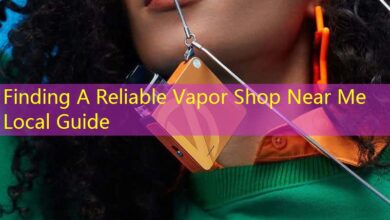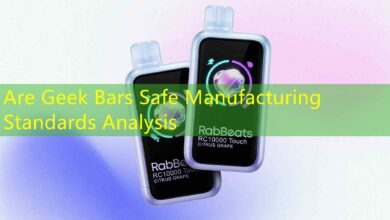Is Second Hand Vape Bad Current Research Findings
Introduction
The popularity of vaping has skyrocketed over recent years, with many people turning to e-cigarettes as a perceived safer alternative to traditional smoking. However, a new trend has emerged: the rise of second-hand vaping, where non-smokers and bystanders are exposed to the vapor exhaled by vapers. This raises critical questions and concerns about health effects. This article aims to explore the latest research findings surrounding the dangers of second-hand vape inhalation, offering insights into its implications for both users and bystanders.
Understanding Second-Hand Vape
Second-hand vape refers to the aerosol produced when an individual exhales vapor from an e-cigarette or vape pen. While marketed as a less harmful option compared to combustible tobacco, the chemical composition of vape aerosol can still pose risks. E-cigarettes vaporize liquid that contains nicotine, flavorings, and other chemicals, some of which may not be fully safe even when inhaled directly by users.
Recent findings indicate that constituents such as formaldehyde and acrolein may be present in second-hand vape, although typically in lower amounts than those found in traditional cigarette smoke. Understanding the components of second-hand vape is crucial for assessing potential health threats.
Health Risks Associated with Second-Hand Vape
The health risks posed by second-hand vape are an area of ongoing research. Some studies suggest that frequent exposure can lead to negative health outcomes, particularly for vulnerable groups like children and pregnant women.
Research has indicated that exposure to e-cigarette aerosol can lead to respiratory issues and may also impact cardiovascular health. A significant concern lies in the varying concentrations of harmful substances in the vapor, which can fluctuate based on the device settings and the liquid used. This inconsistency highlights the need for consumers to stay informed and cautious.
Comparative Analysis of E-Cigarette Aerosol and Cigarette Smoke
A thorough comparison reveals interesting insights into how second-hand vape differs from traditional cigarette smoke. The following table outlines key differences and similarities:
| Component | Cigarette Smoke | E-Cigarette Aerosol |
|---|---|---|
| Nicotine | High concentration | Variable concentration |
| Formaldehyde | Present | Possible trace amounts |
| Heavy Metals | Common | Possible presence but less concentrated |
| Flavoring Agents | None | Present, with uncertain effects |
This comparative analysis highlights that while e-cigarette aerosol may have lower concentrations of some harmful substances than cigarettes, it is not without its risks.
Public Perception and Regulatory Responses
Public perception of vaping and the ensuing policy responses have evolved. Communities are often divided; while some view vaping as a method to quit smoking, others advocate for stricter regulations due to the potential dangers of second-hand exposure. Many cities and schools have begun instituting bans on vaping in public places, mirroring bans on traditional smoking to protect public health.
The trends in regulation reflect an increased awareness of the potential risks associated with second-hand vape and highlight a growing movement towards safeguarding non-smokers in public settings.
Research Gaps and Future Directions
Despite the growing body of evidence, significant gaps remain in our understanding of the long-term effects of second-hand vape exposure. Future research should focus on longitudinal studies that monitor health outcomes in individuals exposed to second-hand vape over extended periods.
Additionally, more extensive analyses on the health effects of flavoring agents and other chemicals are critical. Addressing these knowledge gaps is essential for informed public health policies and effective communication about the risks associated with vaping.
Frequently Asked Questions
What are the risks of breathing in second-hand vape compared to second-hand smoke?
Second-hand vape contains fewer harmful substances than traditional cigarette smoke; however, it still poses potential health risks, especially over prolonged exposure. It’s essential for non-smokers to remain cautious, particularly for vulnerable populations.
Can children be affected by second-hand vape exposure?
Yes, children can be at risk from second-hand vape, especially in enclosed spaces. E-cigarettes may expose them to harmful chemicals and affect their respiratory health.

Is it safe to use e-cigarettes around pets?
While there is limited research specifically on pets, the chemicals present in e-cigarettes could potentially harm them. It is always best to limit any exposure to second-hand vape for pets to ensure their safety.
This article provides essential information on the implications of second-hand vape exposure and encourages ongoing research and discussion regarding its health effects. For those interested in vaping products, they can visit our website to explore various options.




